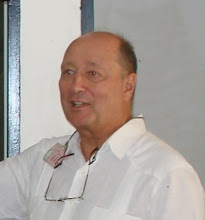The past three weeks have seemed like an eternity, from the time late in the evening of the 12th of January, when the first patients began to arrive in tap-taps from Port- au-Prince, and the true scope of the disaster was not yet understood, until today. Now many of the quake-related patients have been discharged, and the many crises, joys, heartbreaks and celebrations which filled our moments are fading into memories. Time, which extended out through the many waking hours of the day, is slowly returning to normal cycles with meals at tables with team members and guests, the occasional visit to the Verettes market, and even trips to Port-au-Prince to meet with relief agencies. For me, it has brought a return to my office in the Community Services building, with the daily agendas filled with the concerns of the residents of this region.
I still go through the hospital several times each day, checking on the special friends whom we got to know so well. Yesterday, the lady who offered to be my Mami, who had spent several weeks in bed with her leg in traction, was sitting up, her hair done by her daughter, and wearing a spiffy nightgown. She had been cleared for discharge at last, and her sons were cleaning out their car which had been their home for several weeks. We shared a last moment together before we wheeled her to the exit.
For me it was a symbolic statement of a closing of an intense era in the hospital’s history. From these days forward, Haiti will never be the same, and HAS will also never be the same. We have all been redefined by this tragedy, as we have been redefined by the heroic response to it by the clinical staff, by the community, and by the patients and their families. We have emerged with greater confidence in our abilities to respond great challenges, and with a greater trust in each other and our professional and personal commitments.
Now, we are entering into a different phase of the disaster – when we have to confront the reality of the changes which have been wrought by the earthquake, including the devastation of the capital city and its infrastructure, and the massive population shifts which have brought people to the countryside, fleeing the destruction and insecurity of the city. We have to plan for the registration of many new residents in this area, and to prepare to provide immunizations, food support, primary care, and even shelter for many of them.
HAS is part of the formal planning process for a post-earthquake reality in Haiti, and for the design of a health care delivery structure which will be decentralized away from a concentration in the center of the country. Each day, clusters of activity groups meet in the tents which have sprouted next to the tarmac in the airport, conducing needs assessments, forecasting demands, and planning services. While most of the affected services and populations are in the city, HAS presents a voice for the institutions and populations beyond the immediate impact area, which are also affected, and which offer valuable services to the overall situation. As the new reality becomes clearer, we will be asked to accept new roles as one of the few substantial health facilities outside of the capital, and to help o design models for health and human services which will address the current critical state as well as the longer-term future.
Many of you have been kind enough to let me know that the information in these postings have been informative and appreciated. To a certain extent, they have also been therapeutic for me, and I have enjoyed the opportunity to share these experiences.
Ian Rawson
skip to main |
skip to sidebar




